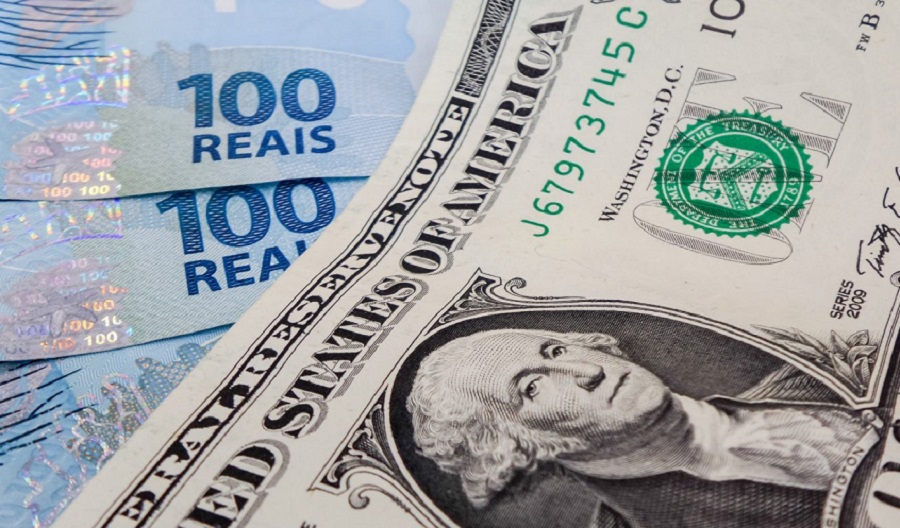RIO DE JANEIRO, BRAZIL – The spot dollar closed Monday down 0.43% at R$5.2186, its lowest since September 6 last year (R$5.1764).
The day was varied in the global exchange markets, with the dollar index rising steadily on a day of declines in some emerging currencies, including part of Latin America’s. However, other pairs of the Brazilian real appreciated, such as the Mexican peso and the Russian ruble.

Concerns over a conflict between Russia and Ukraine justified a more defensive stance in global financial markets throughout the day, but the Brazilian currency once again beat external pressure – and the narrative to explain it remains the same: the high Brazilian interest rates as an attraction for capital.
But in the domestic exchange rate, the positive flow of foreign capital continued to set the tone, in a trend that is drawing attention since the beginning of the year, with some US$5.7 billion, in net terms, entering the country.
Speculators operating on the Chicago Mercantile Exchange made the largest net purchase of Real contracts in at least 26 years in the week ending February 8. The amount was so large that it caused a reversal in the stock of positions – from a sure loss target, the Brazilian real is now a bullish bet.
It is the first time investors are optimistic about the Brazilian currency since September last year and the confidence level is the highest since August that same year.
The Brazilian real comfortably leads gains in 2022 among its main rivals by rising 6.78%, equivalent to a 6.35% drop in the dollar.
In February, the exchange rate is up 1.66% – the dollar is down 1.63% – leaving the Brazilian real in second place overall in the period.
“The Brazilian real has benefited from a very fast interest rate hike cycle,” Goldman Sachs strategists said in a report, drawing attention to the currency’s carry rate, now at around 11% per year, the good overall performance of emerging currencies and the still high level of risk premium embedded in the local exchange rate.
“In light of this, coupled with the high ‘beta’ of the Brazilian real to the upside potential for commodities, we are lowering our projections for the dollar to R$5.00, R$5.10 and R$5.10 in 3, 6 and 12 months, respectively (from R$5.40, R$5.50 and R$5.50 before),” they said, considering that enthusiasm with the real and with other currencies of countries that began raising interest rates early may persist in the short term.
Along the same lines, Rabobank reduced its projection for the dollar level at the end of this year to R$5.56, against a previous estimate of R$5.65.
However, there are some considerations.
In a scenario review last week, Itaú Unibanco said that the high SELIC, now in double digits, has helped attract a greater flow of dollars to Brazil, which explains the recent appreciation of the Brazilian real.
Nevertheless, the bank maintained its exchange rate forecast of R$5.50 per dollar at the end of 2022 and R$5.75 per dollar at the end of 2023, estimating that a more expressive appreciation trend would depend on the reduction of external and domestic uncertainties.
“In the global scenario, the anticipated rise in the basic U.S. interest rate (given the increase in inflationary pressures) is a relevant factor and has significant weight on the dynamics of the Brazilian real. Domestically, doubts related to the development of public accounts and fiscal sustainability also tend to pressure the currency in the coming years,” they said.

